As we continue to pack away the living room and kitchen and haul things to the basement, we’re reminded of how lucky we are to have our short basement.
Huh? Short what?
Two years ago we converted our dirt floor crawl space to a heated and sealed “short basement”. [See the whole process here.] We wanted to take advantage of the valuable square footage, but didn’t want the headache and expense of digging out tons of dirt and underpinning the existing foundation. So after some necessary structural enhancements (including new beams, posts, footings and a new concrete retaining wall) we poured a new concrete rat slab over the compacted dirt and vapor barrier. A rat slab is thinner than a typical slab and yes, meant to keep out rodents (fortunately for us, that’s not something we’ve ever encountered). In addition to a sturdy structure, this project created about 350 SF of instant storage!
But let’s go back in time first. This was the state of our crawl space when we bought the house:
And this is what it looked like mid-construction as Kyle dug out dirt for the new footings. Yes, that’s a pick axe. Hardpan is not your friend.
Here are a couple slightly distorted, stitched together photos of its current state:
One of the best parts of this space is that is houses our high-efficiency gas furnace as well as the main trunk line (neatly tucked up behind the beam that runs between the stair and the furnace). This means that we have no duct work below the joists in the main basement space, a great benefit since head height is already limited. After the furnace was in, we installed a series of interlocking rubber floor tiles (another craigslist find!) to protect hands and knees since crawling is still the primary mode of transportation. Next, it was time to get organized.
Since our house has no closets (besides the IKEA wardrobe that we installed in the bedroom), we keep all of our infrequently used belongings in our short basement. Despite the crawling part, we developed a logical, organized storage system of rolling plastic bins that can easily slide in and out for quick access. As we complete the main floor and begin to implement our long list of creative furniture solutions, we’ll move some of these out of storage hibernation.
Short basements may not always be the best solution, but for us, it was a way to take advantage of 350 SF of space that already existed. Additionally, crawl spaces are typically unheated spaces that must be vented to prevent unwanted moisture. By converting our crawl to a heated, insulated space we add to our houses’ thermal mass which means our heating system doesn’t have to compensate for cooler air under the main floor.
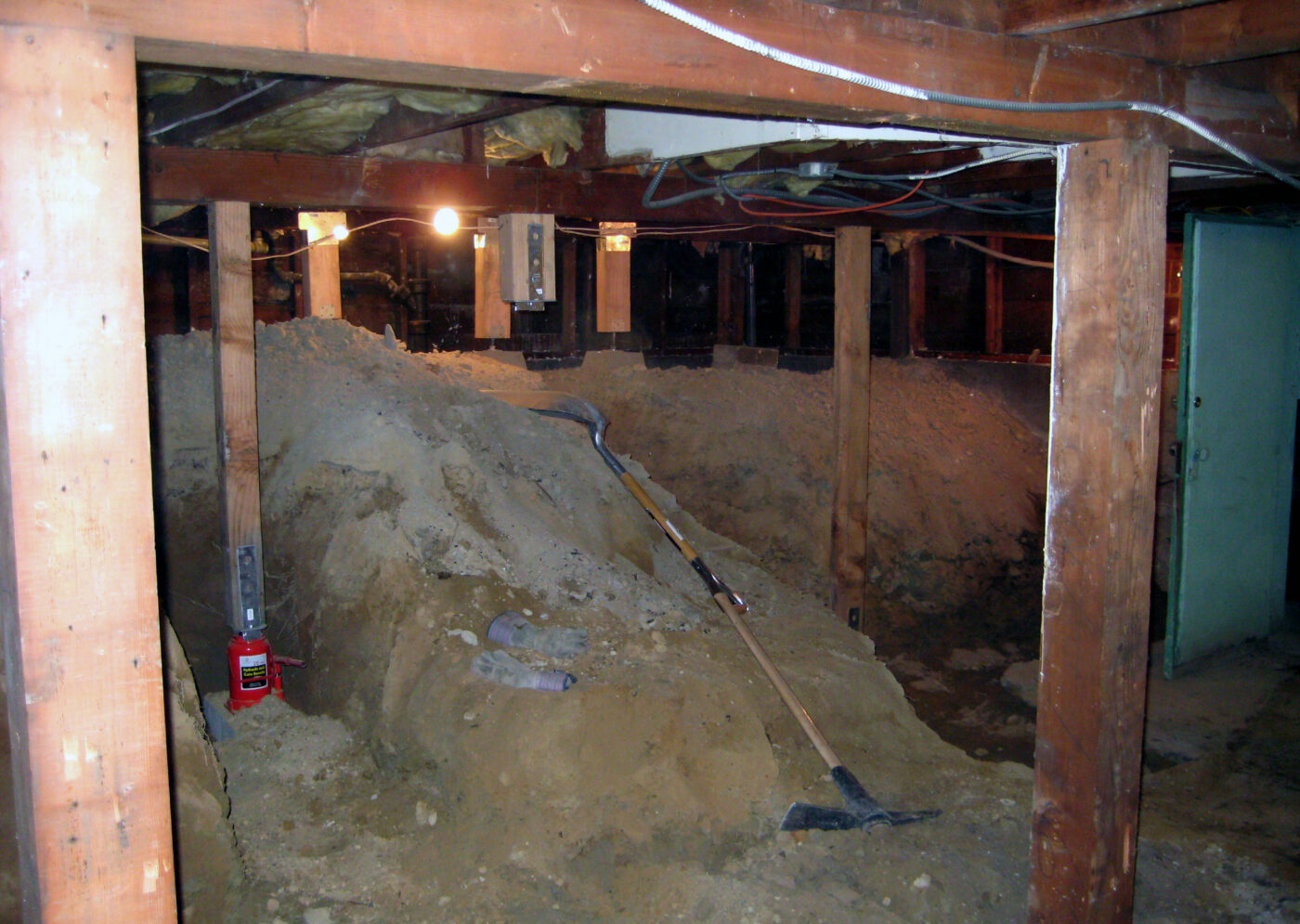
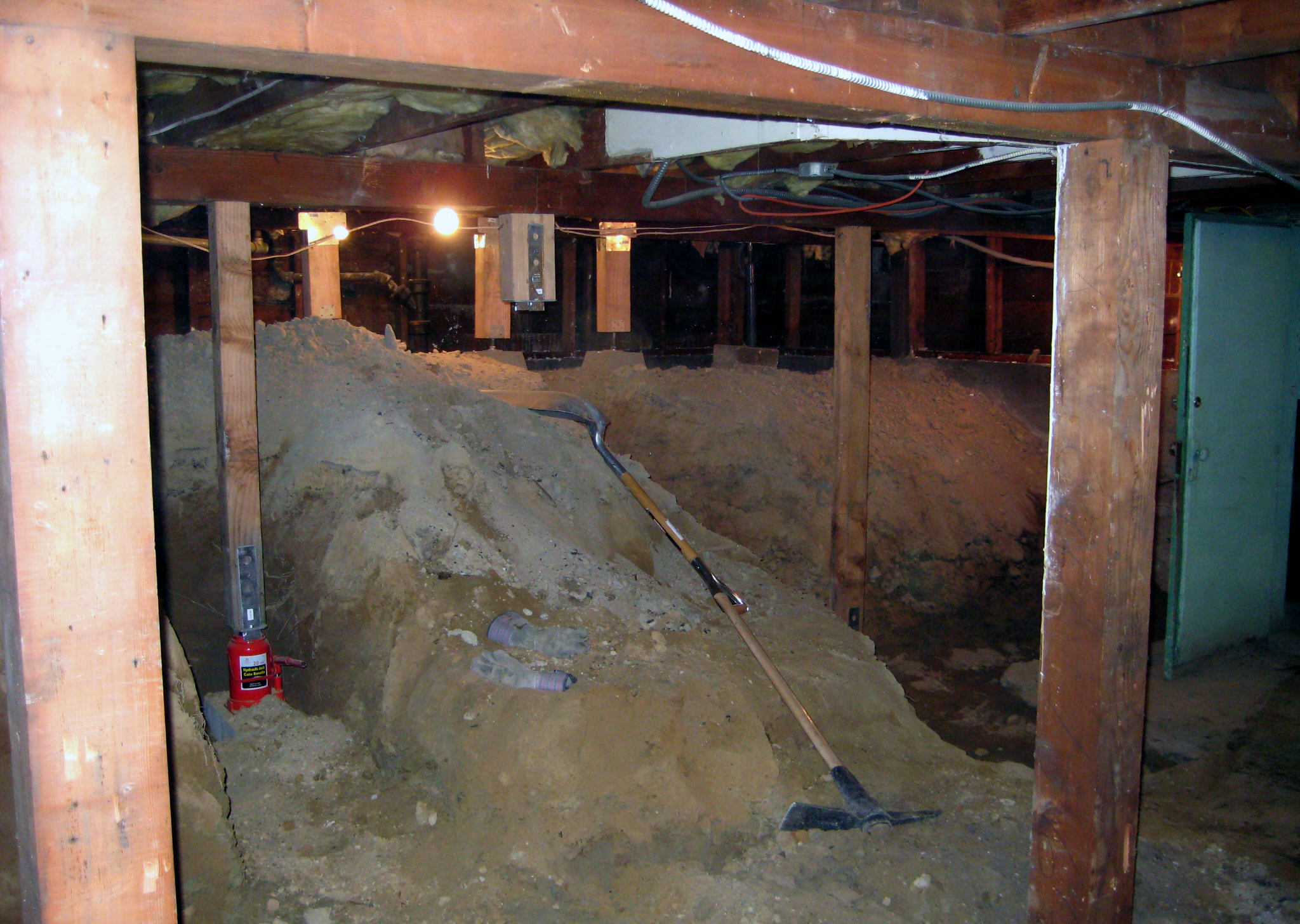
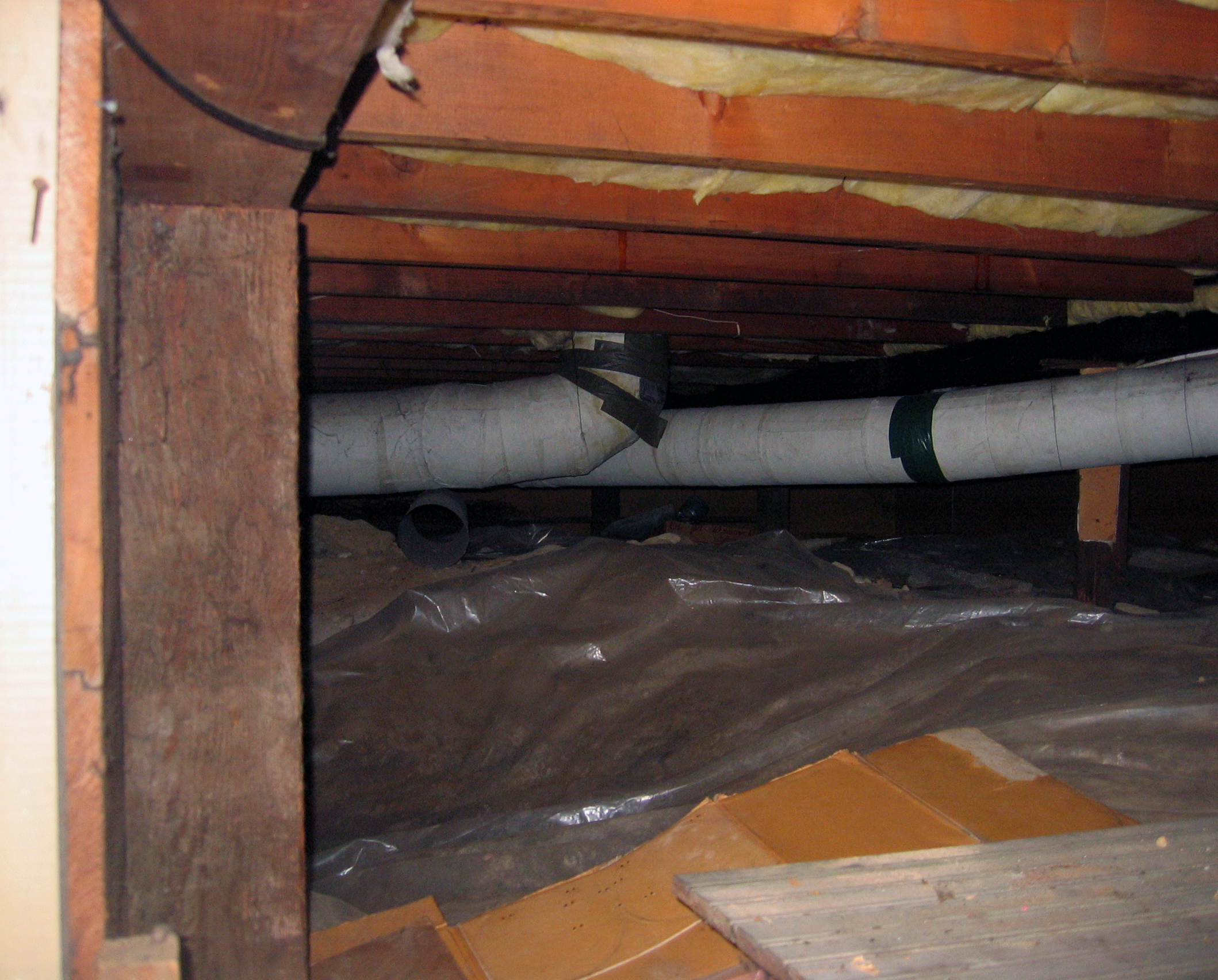
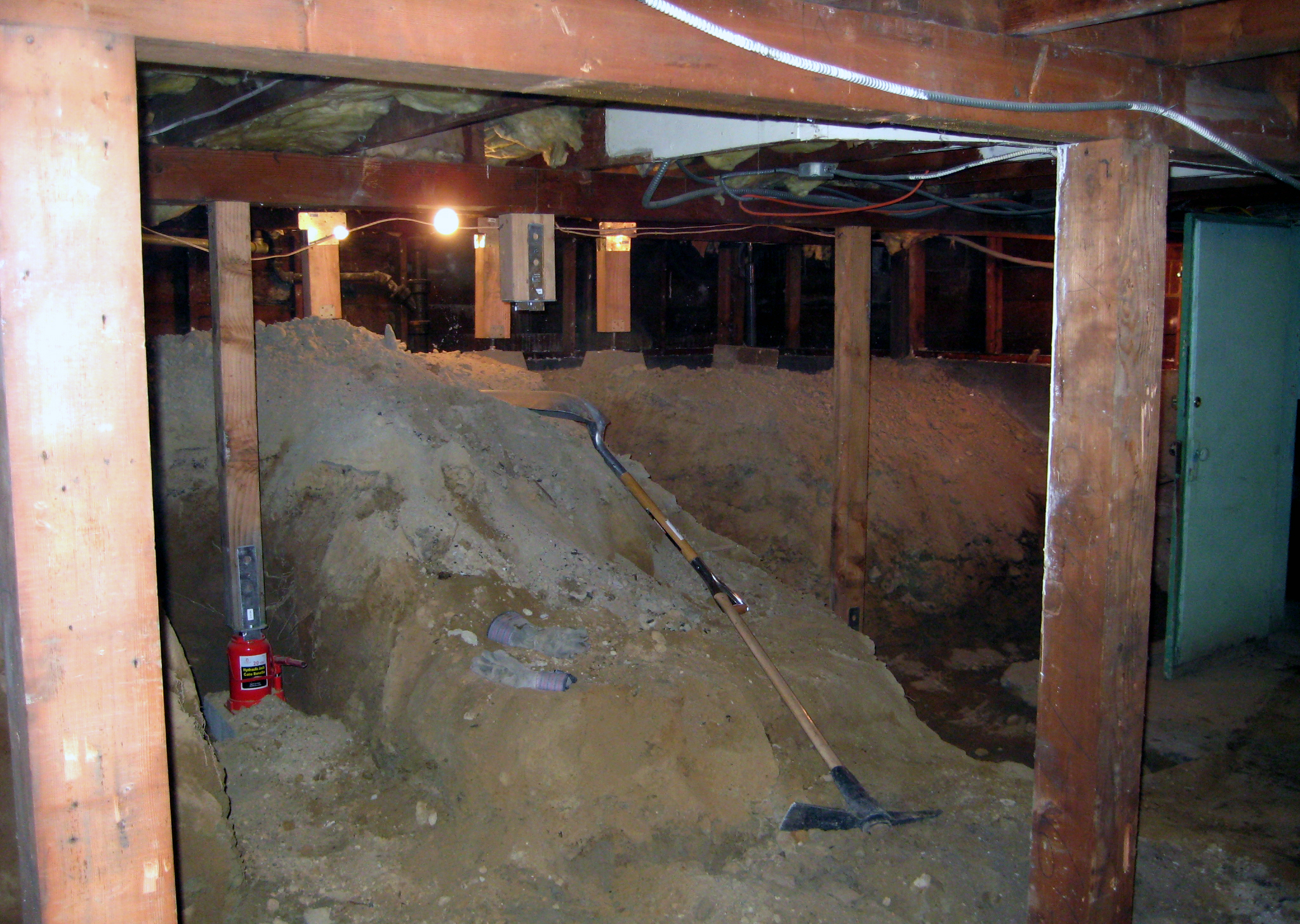

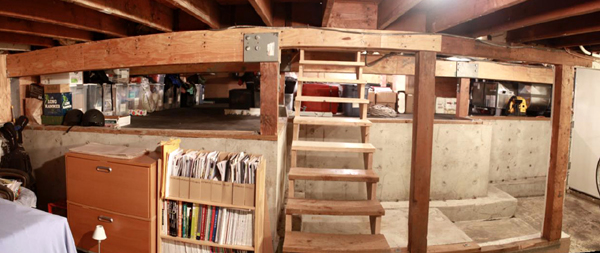
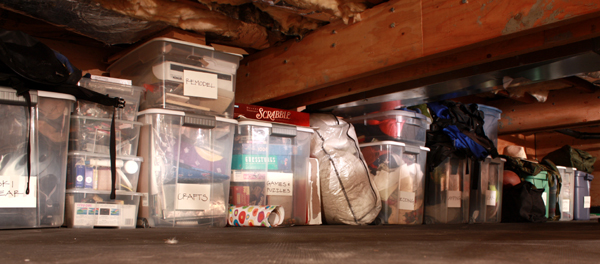
Ah, how I’d love to have all of that extra space! We, too, suffer from pint-size storage in our current home…
Kelly
so there was a partial basement to the crawlspace.
i like what you guy’s did.
i thought about doing that with ours.
except we don’t have a partial basement to start with.
We have very similar basement, and I’ve been considering doing this exact same thing. It’s great to see how your projected turned out in the end, it looks way better than what I had pictured in my mind for ours!
Thanks for taking the time to share!